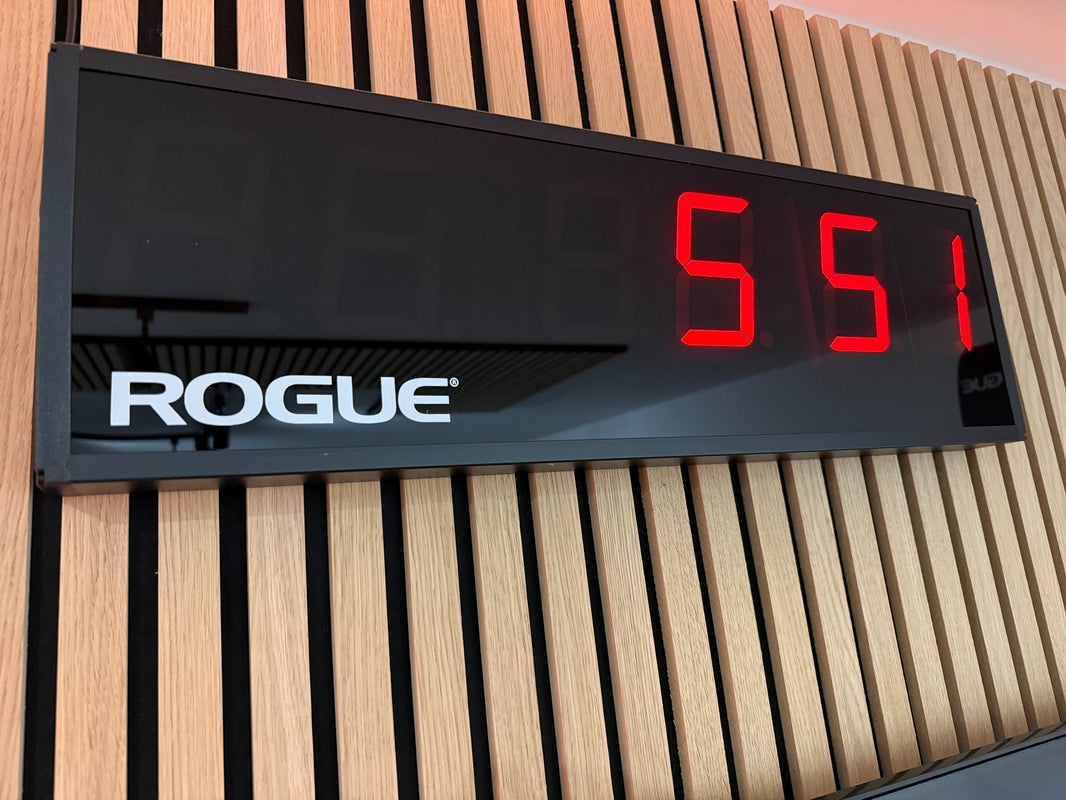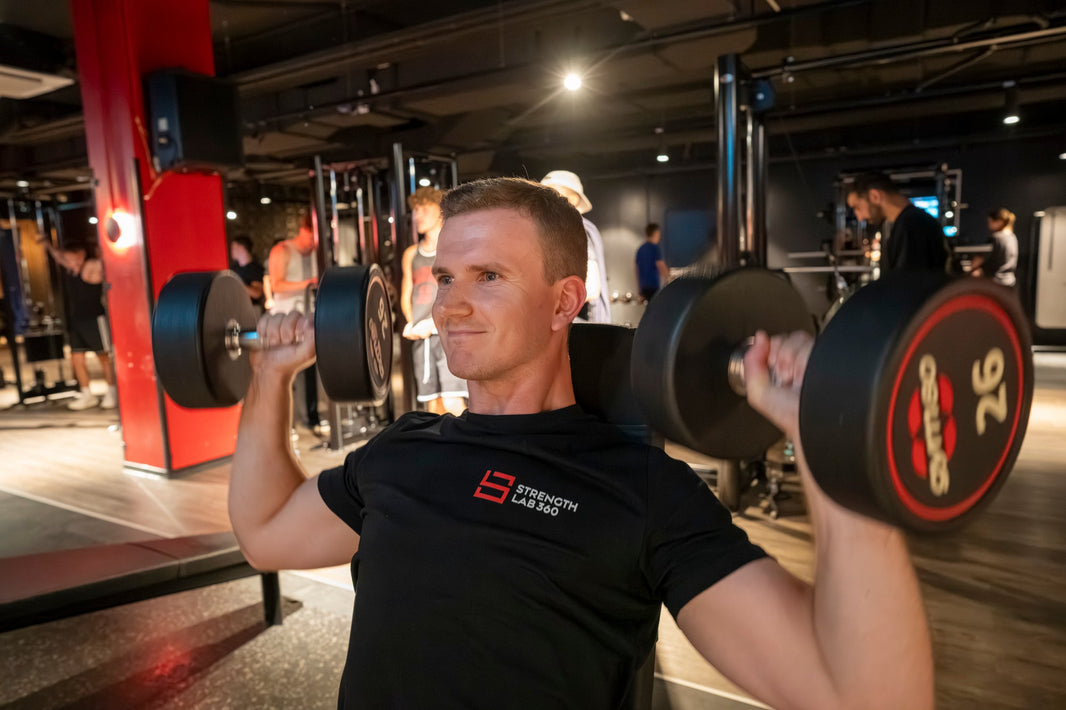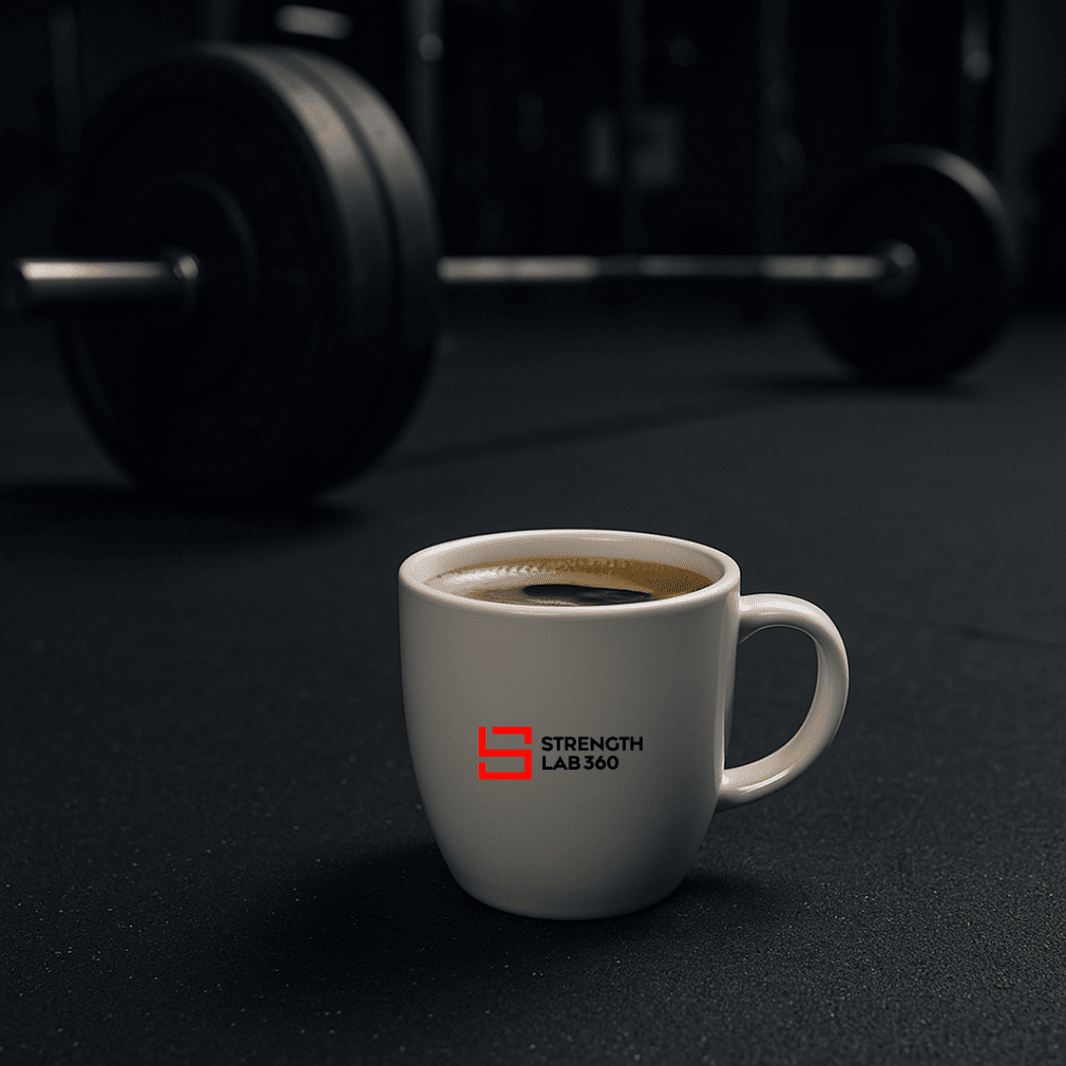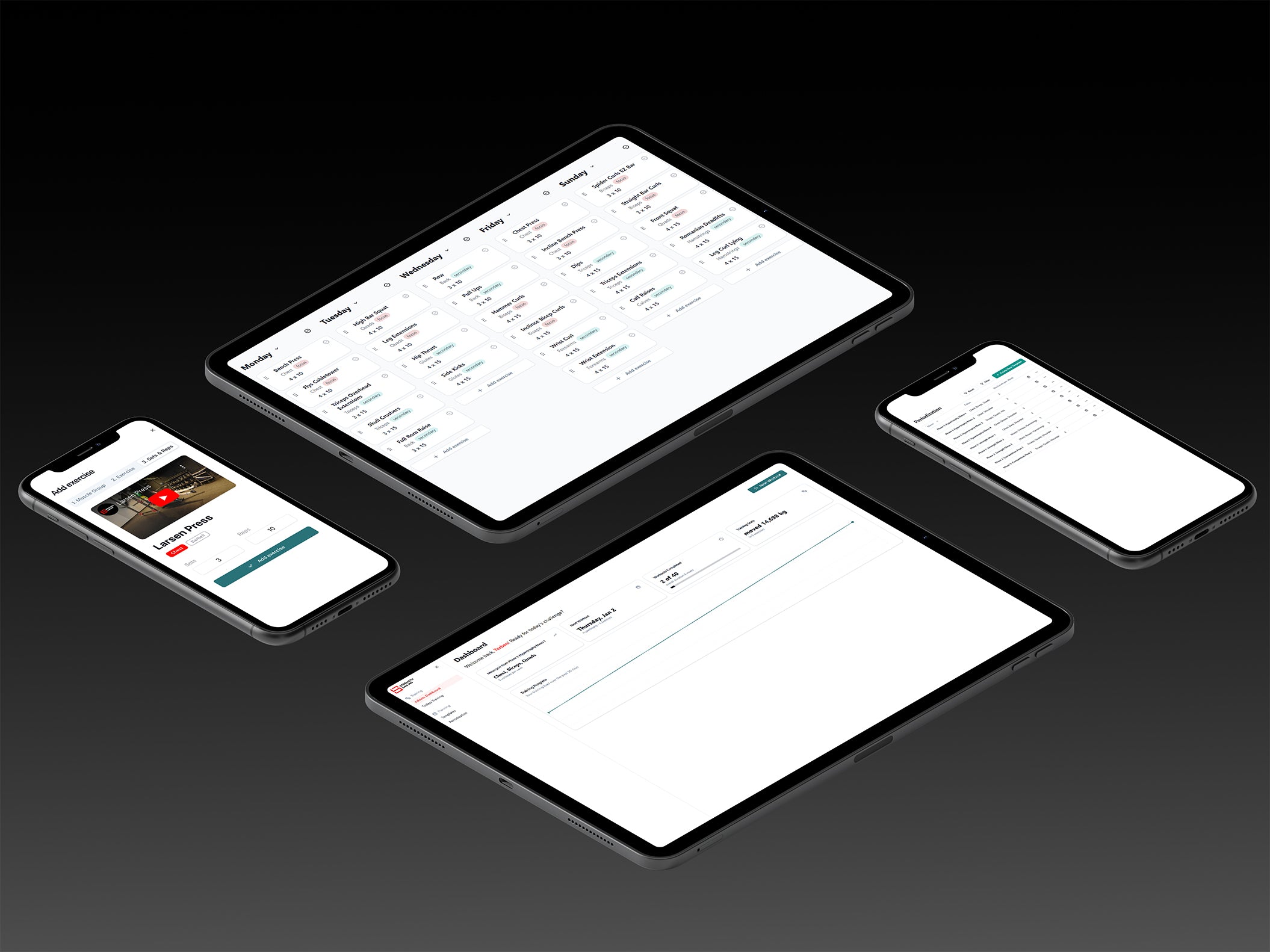Discover the Best One Rep Max Calculator: Optimize Your Training With Science Are you striving to discover your true strength potential? The One Rep Max (1RM) is a pivotal metric for athletes seeking to calibrate their training intensity and measure progress. This article unveils the premier One Rep Max Calculator, a tool grounded in scientific principles, designed to elevate your deadlift, bench press, and other lifts. Readers will learn how to harness this calculator to refine their training programs and gain insights into the science that underpins effective strength training. By engaging with this content, you will not only solve the puzzle of accurately gauging your lifting capacity but also tailor your workouts for maximum efficiency and growth.
Key Takeaways
- Accurate 1RM calculations are essential for personalized and effective strength training
- Regular 1RM reassessment aligns training with current strength levels, aiding progression
- One Rep Max calculators must adjust for individual physiological and performance data
- Progressive overload, guided by 1RM data, is crucial for continuous muscle growth
- Recovery periods are vital to complement high-intensity training near one's 1RM
Understanding the One Rep Max (1RM) and Its Importance
The One Rep Max (1RM) stands as a pivotal metric in strength training, offering a window into an athlete's maximal strength capacity in exercises like the squat and bench press. Discover your true strength potential with our science-backed One Rep Max Calculator. This singular data point, when accurately calculated, informs tailored training regimens, enhancing both strength and endurance. The subsequent sections delve into the science underpinning precise 1RM calculations, the advantages of integrating this knowledge into one's training routine, and the typical errors to avoid when estimating 1RM. Each aspect is crucial for athletes seeking to optimize their performance through evidence-based methodologies.
What One Rep Max Reveals About Your Strength
The One Rep Max (1RM) is a cornerstone of physical fitness assessment, particularly in disciplines such as powerlifting and bodybuilding. Discover your true strength potential with our science-backed One Rep Max Calculator. It serves as a benchmark for an individual's maximal strength, allowing for the customization of training programs that are both effective and safe. By employing a reliable formula to determine 1RM, athletes can set accurate training percentages, ensuring progressive overload and optimal strength gains without the risk of injury.
Understanding one's 1RM is not just about lifting prowess; it's a strategic tool that informs the entire training cycle. For instance, powerlifters can use their 1RM to meticulously plan their lifts in preparation for competition, while bodybuilders might adjust their 1RM data to focus on hypertrophy. The key to unlocking these benefits lies in the precision of the 1RM calculation: a precise figure leads to tailored training intensities and volumes that align with specific fitness goals. Discover your true strength potential with our science-backed One Rep Max Calculator.
- Establishing a baseline for strength capacity and tracking improvements over time.
- Guiding the intensity of workouts by setting accurate percentages for various lifts.
- Enabling periodization by providing data to structure training phases for peak performance.
The Science Behind Accurate 1RM Calculations
Discover your true strength potential with our science-backed One Rep Max Calculator. The science behind accurate One Rep Max (1RM) calculations is rooted in understanding the relationship between muscle strength, fatigue, and injury prevention. An exact 1RM measurement allows athletes to train at the appropriate intensity, minimizing the risk of injury due to overexertion and reducing unnecessary fatigue. This precision is achieved by considering factors such as the athlete's current fitness level, recent performance, and the specific weight of the barbell in kilograms.
Practical application of 1RM calculations involves a balance between maximal effort and safety. For instance, when an athlete attempts to lift a weight close to their 1RM, the risk of muscle strain or joint stress increases. Therefore, strength coaches often employ submaximal testing protocols or predictive equations to estimate 1RM without exposing the athlete to the dangers of lifting their maximum kilogram capacity. These methods ensure that the calculated 1RM is a reliable guide for structuring progressive training programs: Discover your true strength potential with our science-backed One Rep Max Calculator.
- Submaximal lifts are used to estimate 1RM while reducing the risk of injury.
- Predictive equations take into account the number of repetitions completed with a lighter weight to forecast 1RM.
- Regular reassessment of 1RM helps to adjust training loads in response to improvements in strength and muscle development.
Benefits of Knowing Your 1RM in Training
Grasping one's One Rep Max (1RM) equips the athlete with a clear gauge of their lifting capabilities, allowing for the meticulous calibration of training loads. This knowledge is instrumental in preventing the common pitfall of overtraining, which can lead to increased fat accumulation and a negative impact on body mass index (BMI). By understanding the maximal pounds one can lift, athletes can fine-tune their workouts to foster a balance between muscle growth and recovery, ensuring sustainable progress.
Moreover, the application of a precise 1RM figure in training regimens is a testament to the power of individualized fitness strategies. It enables athletes to surpass plateaus by systematically increasing the poundage in their lifts, thereby catalyzing strength gains and muscle hypertrophy. The strategic manipulation of training variables, informed by accurate 1RM data, empowers athletes to optimize their performance and body composition with unparalleled precision.
Common Missteps When Estimating 1RM
Estimating one's One Rep Max (1RM) inaccurately can derail training progress and lead to suboptimal results. A common error is neglecting the influence of daily physiological fluctuations on strength levels, which can cause significant variance in maximal lifting capacity. Athletes and coaches must recognize that factors such as sleep quality, nutrition, and stress levels can affect 1RM calculations, necessitating adjustments to training loads for continued advancement.
Another oversight in 1RM estimation is the reliance on outdated or generic formulas that do not account for individual differences in muscle fiber composition, limb length, and lifting technique. Such discrepancies can lead to either underestimating or overestimating one's true strength, thereby compromising the effectiveness of the training program. It is essential for individuals to utilize a One Rep Max calculator that adapts to their unique physiological and biomechanical profile to ensure precision in their strength training regimen.
Introducing the Best One Rep Max Calculators Available
Selecting the optimal One Rep Max (1RM) calculator is a critical step for athletes dedicated to refining their strength training. This section evaluates the criteria for choosing a dependable 1RM calculator, contrasts the leading online tools, and discusses user-friendly features that enhance training experiences. It also examines the accuracy and reliability of these calculators, as endorsed by fitness experts. Each topic is designed to provide athletes with the insights needed to make informed decisions about their training tools.
Criteria for Selecting a Reliable 1RM Calculator
Selecting a reliable One Rep Max (1RM) calculator necessitates a discerning approach, focusing on accuracy and scientific validation. Athletes should prioritize calculators that are grounded in research, utilizing algorithms that account for individual variability in strength levels. The ideal tool adjusts for factors such as age, gender, and experience, providing a nuanced estimate that guides precise training loads.
Moreover, the utility of a 1RM calculator is amplified when it offers user-centric features, such as the ability to track progress over time and integrate with training programs. A calculator that delivers real-time updates and adapts to the athlete's performance data ensures that training remains aligned with current capabilities, fostering optimal strength development and minimizing injury risk.
Comparison of Top Online 1RM Calculators
In the quest for the most effective One Rep Max calculators, athletes encounter a variety of options, each claiming precision and ease of use. A comparison of top online 1RM calculators reveals significant differences in their approach to estimating maximal strength. The best calculators stand out by incorporating advanced algorithms that factor in the user's lifting history, current performance, and physiological data, offering a more personalized and accurate assessment of their 1RM.
Discerning athletes look for 1RM calculators that not only provide a number but also integrate seamlessly with their training programs. The leading calculators on the market differentiate themselves by offering real-time adjustments based on the athlete's progress, ensuring that training intensities remain aligned with their evolving strength levels. This dynamic approach to 1RM calculation supports continuous improvement and reduces the likelihood of training plateaus or injuries.
User-Friendly Features to Enhance Your Experience
User-friendly features in One Rep Max calculators are essential for athletes who prioritize efficiency and accuracy in their training. A top-tier calculator offers intuitive navigation and swift data entry, allowing users to quickly input their lifting statistics and receive immediate, precise 1RM estimations. This seamless experience is crucial for athletes who need to make on-the-fly adjustments to their training loads, ensuring their sessions are always aligned with their current strength levels.
Moreover, the best 1RM calculators provide clear, actionable insights that go beyond mere number crunching. They integrate with training logs, offering visual progress tracking and personalized recommendations based on past performance. This level of customization and feedback is invaluable for athletes aiming to break through plateaus and continuously refine their strength training approach, making the most of every workout.
Accuracy and Reliability: What the Experts Say
Experts in the field of strength training underscore the significance of accuracy and reliability in One Rep Max calculators. They advocate for tools that are not only grounded in scientific research but also validated through empirical data and athlete feedback. Such calculators are lauded for their ability to provide athletes with dependable strength assessments, which are essential for designing effective and safe training programs.
The consensus among fitness professionals is that the best One Rep Max calculators are those that adapt to an individual's unique physiological characteristics. These calculators take into account variables such as muscle fiber composition, training history, and biomechanical factors, offering a bespoke estimation of maximal strength that enhances the precision of training regimens and supports peak performance.
Step-by-Step Guide to Using a One Rep Max Calculator
Embarking on the journey to optimize strength training begins with mastering the use of a One Rep Max (1RM) calculator. This guide provides a structured approach to preparing and inputting lifting data, ensuring accuracy in the numbers entered. Athletes will learn to interpret results effectively for making informed training adjustments. Additionally, the guide offers tips for maintaining consistency and precision in measurements, a crucial step for tailoring workouts to individual needs and maximizing gains.
Preparing to Input Your Lifting Data
Before utilizing a One Rep Max calculator, athletes must gather recent lifting data to ensure the precision of the results. This preparation involves recording the maximum weight lifted for a given exercise and the number of clean repetitions achieved at that weight. Accurate data collection is paramount, as it directly influences the calculator's ability to provide a reliable estimate of an athlete's maximal strength.
It is essential for the athlete to perform these lifts under consistent conditions, such as similar warm-up routines and rest periods between sets. This consistency helps mitigate variables that could skew the input data, allowing the One Rep Max calculator to generate an accurate reflection of the athlete's true strength capabilities.
Entering Your Reps and Weight Correctly
Accurate entry of repetitions and weight is the cornerstone of utilizing a One Rep Max calculator effectively. Athletes must ensure the weight recorded is the heaviest they can lift for a single, clean repetition, and the repetitions entered are the maximum number completed at a submaximal weight. This precision in data entry is critical for the calculator to provide a reliable estimate of maximal strength, which forms the basis for structured training programs.
When inputting data into the One Rep Max calculator, it is imperative to avoid rounding off figures or estimating weights and repetitions. The athlete's commitment to detail ensures the calculator's algorithm can tailor training loads with scientific accuracy, thereby optimizing the athlete's strength training regimen. This meticulous approach to data entry not only refines the training process but also significantly enhances the potential for achieving peak performance.
Interpreting the Results for Training Adjustments
Upon receiving the One Rep Max (1RM) results, athletes must interpret the data to inform their training adjustments. This involves aligning the calculated maximal strength with current training goals, whether it's hypertrophy, endurance, or maximal power output. The 1RM figure serves as a guide to set training intensities, ensuring each session contributes effectively to the athlete's progression.
Interpreting 1RM results accurately is crucial for periodization and avoiding training plateaus. Athletes should adjust their workout intensities based on the 1RM to maintain a trajectory of improvement, considering factors such as recovery and adaptation periods. The results dictate the weight increments for subsequent sessions, fostering a cycle of continuous strength gains:
- Use the 1RM to determine the weight for specific rep ranges that align with training objectives.
- Adjust the training volume and intensity based on the 1RM to prevent overtraining and ensure recovery.
- Reassess the 1RM periodically to reflect gains in strength and adjust training plans accordingly.
Tips for Consistent and Precise Measurements
To ensure consistent and precise measurements when using a One Rep Max calculator, athletes should perform their test lifts under similar conditions each time. Factors such as the time of day, nutrition, and hydration levels can significantly influence performance, so maintaining uniformity in these variables is crucial. This approach guarantees that the 1RM results are a true reflection of the athlete's strength, not a variable outcome influenced by external factors.
For the most accurate 1RM calculations, it is imperative that athletes use calibrated weights and verify the accuracy of the measuring equipment. Discrepancies in weight plates or barbells can lead to incorrect inputs and skewed results. By ensuring the equipment is precise, athletes can trust that the One Rep Max calculator's output is based on factual data, allowing for the fine-tuning of training programs with confidence.
Optimizing Your Training Program With 1RM Insights
Optimizing a training program with One Rep Max (1RM) insights is a science-driven approach to enhancing athletic performance. Tailoring workouts to individual strength levels, adjusting intensity and volume based on 1RM, and setting realistic goals using 1RM data are fundamental for progress. Monitoring these metrics and scheduling regular reassessments ensures that training remains effective and aligned with an athlete's evolving capabilities. This section will explore how to leverage 1RM calculations to fine-tune training regimens for maximum efficacy.
Tailoring Workouts to Your Strength Levels
Customizing workouts to align with individual strength levels is a critical component of any effective training program. By utilizing a One Rep Max calculator, athletes can pinpoint the precise weight loads for each exercise, ensuring that every set and rep is calibrated to their unique capabilities. This approach not only fosters consistent strength gains but also minimizes the risk of injury, as the prescribed intensities are neither too strenuous nor too lenient for the athlete's current condition.
When athletes apply insights from their One Rep Max, they unlock the potential for targeted muscle development and enhanced athletic performance. The process involves adjusting workout variables such as volume, intensity, and frequency to match the calculated 1RM, thereby creating a personalized training experience that directly addresses the athlete's goals and progress:
- Setting precise training loads for hypertrophy by calculating percentages of the 1RM that stimulate muscle growth.
- Adjusting rest intervals and exercise selection to optimize recovery and maximize strength adaptations.
- Periodically recalibrating the 1RM to reflect gains in strength and to maintain the challenge as the athlete's capacity evolves.
Adjusting Intensity and Volume Based on 1RM
Adjusting the intensity and volume of workouts based on One Rep Max (1RM) calculations is a strategic approach to strength training that ensures athletes are working within their optimal power zones. By applying percentages of 1RM to different exercises, individuals can tailor their sessions to target specific training outcomes, such as muscle hypertrophy or endurance. This methodical adjustment of training variables directly correlates with improved performance and reduced injury risk.
For athletes aiming to enhance their strength and size, understanding the relationship between 1RM and training volume is crucial. A well-calibrated program considers the number of sets and repetitions in relation to the intensity dictated by the 1RM, fostering a balance between stimulus and recovery:
- Lower percentages of 1RM are typically associated with higher volume for endurance.
- Moderate percentages are used to achieve hypertrophy by balancing intensity and volume.
- High percentages of 1RM are reserved for low-volume, high-intensity strength work.
Setting Realistic Goals Using 1RM Data
Setting realistic goals using 1RM data is a critical step for athletes who aim to see tangible progress in their strength training. By establishing benchmarks based on accurate One Rep Max calculations, individuals can create a series of achievable targets that motivate and guide their training journey. This data-driven approach ensures that goals are not only ambitious but also grounded in the reality of the athlete's current capabilities, fostering a sense of accomplishment and sustained improvement.
Utilizing 1RM data effectively translates into setting incremental goals that are challenging yet attainable, preventing the common pitfalls of overtraining or under-stimulation. Athletes can strategically plan to increase their One Rep Max over time, aligning their efforts with a clear trajectory of strength gains. This methodical progression is essential for long-term success and helps athletes avoid the frustration of stagnant performance, keeping them engaged and committed to their training regimen.
Monitoring Progress and Scheduling Reassessments
Monitoring progress with a One Rep Max calculator is essential for athletes who are serious about their strength training. It allows for the evaluation of training effectiveness and the identification of when to push harder or scale back. Regular reassessment of 1RM is recommended, as it provides a clear indication of strength gains and informs necessary adjustments to training programs, ensuring that athletes continue to challenge their evolving capabilities.
For those utilizing the StrengthLab360 platform, the integration of 1RM insights into their training regimen is seamless. The platform's advanced analytics dashboard not only tracks progress in real-time but also prompts athletes to schedule reassessments, keeping their training aligned with current strength levels. This proactive approach to monitoring and reassessment helps athletes avoid plateaus and maintain a trajectory of continuous improvement.
The Science Behind Effective Strength Training
Effective strength training hinges on a deep understanding of muscle adaptation and growth, where progressive overload plays a crucial role. Incorporating adequate rest and recovery is equally essential to achieve optimal results. To circumvent plateaus, evidence-based techniques are indispensable, ensuring athletes continue to make measurable progress. This section explores these foundational concepts, providing athletes with the knowledge to optimize their training regimen using the best One Rep Max calculator.
Understanding Muscle Adaptation and Growth
Muscle adaptation and growth are fundamental to strength training, with progressive overload acting as the catalyst for muscular development. When athletes consistently challenge their muscles with weights close to their One Rep Max (1RM), they trigger hypertrophic responses that lead to increased muscle size and strength. The process is intricate, involving microtears in muscle fibers that, when repaired, fortify the muscles, making them more robust and capable of handling heavier loads.
Understanding the nuances of muscle growth empowers athletes to optimize their training regimens using precise 1RM calculations. This precision ensures that each session contributes to muscle adaptation without overtaxing the system, thereby promoting sustainable progress. Athletes who leverage scientifically validated One Rep Max calculators can fine-tune their training intensity, aligning it with their body's natural growth mechanisms and avoiding the pitfalls of overtraining or stagnation.
The Role of Progressive Overload in Training
Progressive overload is the cornerstone of strength training, necessitating incremental increases in resistance to stimulate muscle growth and enhance strength. This principle ensures that athletes consistently challenge their musculature, compelling adaptation and preventing stagnation. By integrating a One Rep Max calculator into their regimen, athletes can apply this concept with scientific precision, adjusting their training loads in alignment with their evolving strength capacities.
Employing progressive overload effectively requires a delicate balance between intensity, volume, and recovery. Athletes who harness the insights from a reliable One Rep Max calculator can judiciously increase the demands on their muscles, fostering continuous improvement while mitigating the risk of overtraining. This strategic approach to strength training, underpinned by accurate 1RM data, is essential for achieving peak performance and realizing long-term fitness goals.
Incorporating Rest and Recovery for Optimal Results
Incorporating rest and recovery into a strength training regimen is not merely beneficial; it is essential for achieving optimal results. The body requires time to repair and strengthen muscles after exertion, particularly when training near one's One Rep Max (1RM). Athletes who prioritize recovery periods are more likely to experience sustained strength gains and reduced risk of injury, as their bodies are given the necessary time to adapt to the stresses of lifting.
Effective strength training, guided by accurate 1RM calculations, must account for the delicate balance between work and rest. When athletes use the best One Rep Max calculator to determine their training loads, they can also plan adequate recovery to match the intensity of their workouts. This strategic approach ensures that each session contributes to muscle growth and strength enhancement without compromising the body's ability to recuperate and thrive.
Avoiding Plateaus With Evidence-Based Techniques
To circumvent the common plateau in strength training, athletes must employ evidence-based techniques that promote continued adaptation. Strategic variation in exercise selection, intensity, and volume, guided by precise One Rep Max (1RM) calculations, ensures muscles are consistently challenged, fostering growth and strength gains. This approach, rooted in scientific principles, is critical for athletes to overcome stagnation and continue progressing toward their peak performance.
Periodization is a proven method to avoid plateaus, involving systematic changes in training variables over time. By integrating periodization with data from the best One Rep Max calculator, athletes can plan cycles of progression and recovery, tailored to their individual strength levels. This technique not only prevents plateaus but also reduces the risk of overtraining, aligning workouts with the body's natural capacity for adaptation:
| Training Phase | Focus | 1RM Utilization |
|---|---|---|
| Strength Endurance | High volume, low intensity | 50-70% of 1RM |
| Hypertrophy | Moderate volume and intensity | 70-85% of 1RM |
| Maximal Strength | Low volume, high intensity | 85-100% of 1RM |
Frequently Asked Questions About One Rep Max Calculators
As athletes seek to optimize their training with the best One Rep Max (1RM) calculator, questions arise regarding its application and safety. This section addresses concerns such as the safety of 1RM testing across different fitness levels, the frequency of updating one's 1RM, the applicability of 1RM calculations to various exercises, and discrepancies between calculated and actual performance. Each query is explored with scientific insight, ensuring users can apply 1RM data effectively to their strength training routines.
Is Testing 1RM Safe for All Fitness Levels?
Testing one's One Rep Max (1RM) is a practice that requires careful consideration of an individual's fitness level and experience. For novice lifters or those with limited strength training background, direct 1RM testing may pose a risk of injury due to the high loads involved. It is advisable for these individuals to utilize submaximal testing methods or estimations provided by reliable One Rep Max calculators, which can offer a safer alternative while still delivering valuable insights for training optimization.
For seasoned athletes, testing 1RM can be a safe and effective way to gauge maximal strength, provided that proper warm-up routines, lifting techniques, and safety measures are in place. These individuals often benefit from the precision that direct 1RM testing offers, allowing them to fine-tune their training programs with confidence. StrengthLab360's advanced calculators and analytics further enhance this process by providing accurate, science-based estimations of 1RM, tailored to the athlete's performance data.
How Often Should I Update My One Rep Max?
Updating one's One Rep Max (1RM) should occur at regular intervals to reflect changes in strength and ensure training programs remain challenging and effective. Typically, athletes might reassess their 1RM every 4-6 weeks, coinciding with the completion of a training cycle. This frequency allows for the incorporation of strength gains into new training blocks, ensuring that each session is calibrated for progression and aligned with the athlete's current capabilities.
However, the need for updating 1RM may vary based on individual response to training, with some athletes requiring reassessments more or less frequently. It is crucial to monitor performance and fatigue levels, as these indicators can signal when an adjustment to the calculated 1RM is necessary. Utilizing a scientifically validated One Rep Max calculator, such as the one provided by StrengthLab360, can aid in determining the optimal timing for updates, tailoring the training experience to the athlete's unique development curve.
Can I Use 1RM Calculations for All Exercises?
One Rep Max (1RM) calculations are primarily suited for compound exercises that engage multiple muscle groups, such as squats, deadlifts, and bench presses. These exercises provide a comprehensive measure of strength that can be effectively quantified through 1RM. However, applying 1RM calculations to isolation exercises or those with a higher risk of injury at maximal loads, like lateral raises or leg extensions, may not yield practical or safe results. Athletes should exercise caution and consult with a StrengthLab360 certified coach to determine the appropriateness of 1RM calculations for their specific exercises.
The utility of One Rep Max calculators extends to a variety of strength training exercises, yet it is essential to recognize that not all movements lend themselves to maximal load testing. For exercises where technique or stability is the limiting factor rather than muscular strength, such as Olympic lifts, 1RM estimations may not accurately reflect an athlete's capability. In these instances, athletes benefit from alternative metrics of performance and should rely on the expertise available through the StrengthLab360 platform to optimize their training regimen.
What if My Calculated 1RM Doesn't Match My Performance?
When an athlete's calculated One Rep Max (1RM) does not align with actual performance, it may indicate a need for recalibration of the estimation method or a reassessment of training variables. Discrepancies can arise from a multitude of factors, including day-to-day variations in physical condition or inaccuracies in the data used for the calculation. It is imperative for the athlete to consider these elements and seek a One Rep Max calculator that dynamically adjusts to their performance data, such as the one offered by StrengthLab360.
Addressing the mismatch between calculated and actual 1RM involves a systematic approach to identify and rectify the underlying causes:
- Reviewing the accuracy of the input data, ensuring that the weight and repetitions reflect the athlete's current capabilities.
- Considering external factors such as nutrition, sleep, and stress, which can affect strength levels and performance.
- Consulting with a StrengthLab360 certified coach to analyze lifting technique and form, which can significantly impact the validity of 1RM estimations.
Ultimately, the goal is to ensure that the One Rep Max calculator serves as a reliable tool for optimizing training programs, enabling athletes to achieve their strength and hypertrophy objectives with scientific precision. By addressing discrepancies and refining the calculation process, athletes can trust their 1RM data to guide their training decisions, leading to more effective workouts and consistent progress.
Conclusion
Selecting the most accurate One Rep Max (1RM) calculator is crucial for athletes to tailor their strength training with scientific precision, ensuring workouts are both safe and effective. By incorporating a reliable 1RM calculator, individuals can set realistic goals, adjust training intensity, and avoid plateaus through evidence-based techniques. Regularly updating one's 1RM is essential to reflect strength gains and maintain the challenge in training regimens. Ultimately, the right 1RM calculator empowers athletes to optimize their performance, leveraging data-driven insights for sustained improvement and peak athletic achievement.
References







